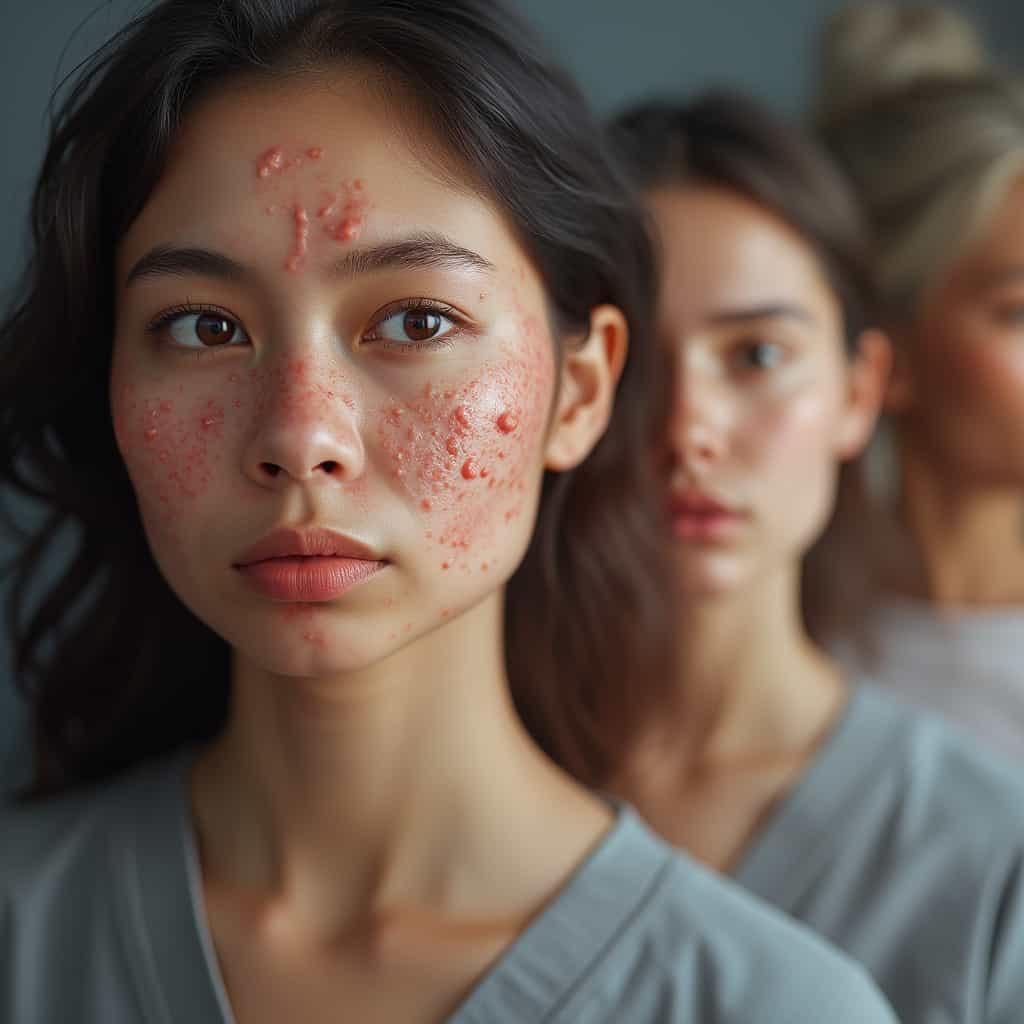Acne, a pervasive and often distressing skin condition, touches the lives of millions worldwide, affecting up to 85% of teenagers and a significant percentage of adults. The condition is characterized by pimples, blackheads, and cysts often concentrated on the face, forehead, chest, upper back, and shoulders. It occurs when the pores of your skin become blocked with oil, dead skin, or bacteria. The psychosocial impact of acne, especially among teenagers, is profound, leading to potential issues of self-esteem and social interaction.
Teenagers, caught in the throes of hormonal changes during puberty, frequently encounter acne as the surge in activity of their sebaceous glands leads to oily skin. This era of life is fraught with challenges, and acne can exacerbate feelings of insecurity. Despite popular mythology, acne is not caused by poor hygiene or eating greasy foods. Genetics, hormones, and stress play substantial roles. Dr. Janet Simms, a leading dermatology expert, illustrates that patience and understanding of one’s skin type are crucial components in managing this condition.
For adults, acne can manifest differently, often arising as late-onset acne, influencing those in their 30s, 40s, and beyond. Adult acne tends to be more inflammatory and concentrated around the jawline and mouth. Stress and hormonal fluctuations are primary contributors, compounded by environmental factors. Adult acne can be particularly frustrating, as it often requires long-term management strategies.
Traditional treatments for acne vary in efficacy and type. Over-the-counter remedies like salicylic acid and benzoyl peroxide remain popular, yet prescription medications such as retinoids and antibiotics can provide additional layers of relief. For more persistent acne, dermatologists may recommend hormonal treatments or oral contraceptives, particularly for women. Isotretinoin, a powerful medication, is employed for severe cases but comes with a range of side effects necessitating close medical supervision.
Beyond these conventional treatments, emerging studies are introducing novel approaches. Recent research is focusing on the microbiome’s role in skin health, with scientists like Dr. Timothy Andrews suggesting that balance rather than eradication of skin bacteria could be key to effective acne management. Probiotics, tailored to enhance skin flora, are gaining traction as a less invasive alternative to combat acne.
Additionally, phototherapy including blue light therapy, shows promise. Blue light therapy, which targets acne bacteria directly, is being fine-tuned to improve effectiveness and accessibility. Likewise, laser therapy and chemical peels continue to evolve, offering quicker recovery stages and minimizing potential side effects.
The geographical prevalence of acne varies, influenced by factors like climate, diet, and genetic predispositions. In North America and Europe, acne is reported with greater frequency, potentially due to diet rich in dairy and processed foods. Conversely, less industrialized regions exhibit lower incidences, often attributed to natural diets and lifestyles.
In juxtaposition to acne, other dermatological issues such as hair loss, atopic dermatitis, and psoriasis confront individuals, often co-existing with acne. Hair loss, an emotionally and socially influential condition, can result from a variety of causes such as hormonal changes, stress, or genetics. Minoxidil and finasteride remain cornerstone treatments, with recent innovations exploring hair follicle stem cell research.
Atopic dermatitis, another common but chronic condition, leads to itchy and inflamed skin and is faced by both children and adults. Treatments such as topical corticosteroids provide relief, while newer biologics are tailored to address the underlying immune responses causing the inflammation. Eczema, a form of dermatitis, has seen promising treatment developments that aim at breaking the itch-scratch cycle.
Psoriasis, an autoimmune condition marked by red, scaly skin patches, also intertwines with dermatological discussions. Biologic drugs targeting specific immune system pathways are proving revolutionary. Simultaneously, advances in dental care reflect broader health impacts, with innovations in biocompatible dental materials and minimally invasive procedures enhancing patient outcomes.
In closing, while acne’s ubiquity is daunting, the expanding range of treatment options and burgeoning research provides hope and relief to those afflicted. As understanding and technology advance, so does the capacity for personalized medicine that takes into account the unique skin environments of individuals, offering optimism for improved skin health across all ages.
You may also like
Hair Loss Treatments and Skin Diseases
Hair loss is a global issue affecting millions of men and women worldwide, with distinct patterns and causes between genders. This article delves into current treatments and explores emerging technologies and research in combating hair loss. Additionally, it examines associated skin conditions, including acne, atopic dermatitis, psoriasis, and dental care, outlining the latest in treatment advancements.
Atopic Dermatitis: Symptoms, Treatments and Promising New Research
Atopic dermatitis is a chronic skin condition characterized by inflammation and itchiness. This article explores the symptoms and treatments for atopic dermatitis and psoriasis, offering insights into innovative treatments and ongoing research for these skin conditions.
Dental Implants and Oral Hygiene: Revolutionary Treatments
This comprehensive article delves into the domain of dental implants and oral hygiene, providing insights into various treatment methods, geographical incidence, and groundbreaking studies on the horizon. Additionally, it explores related health issues such as hair loss, atopic dermatitis, psoriasis, and acne, offering a glimpse into innovative treatments that promise to transform care standards.
Implantes Dentários e Higiene Oral: Tratamentos Revolucionários
Este artigo abrangente se aprofunda no domínio dos implantes dentários e higiene oral, fornecendo insights sobre vários métodos de tratamento, incidência geográfica e estudos inovadores no horizonte. Além disso, ele explora problemas de saúde relacionados, como perda de cabelo, dermatite atópica, psoríase e acne, oferecendo um vislumbre de tratamentos inovadores que prometem transformar os padrões de cuidados.
